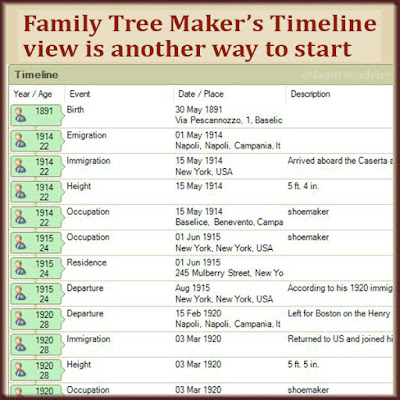Even 1 key will get you going. All 4 might unlock a ton of treasure.
If you could pick only one, which of these family tree accomplishments would make you a better genealogist?
- Perfecting your file, folder and document ORGANIZATION
- Cleaning up your FACTS AND SOURCES and doing them right from now on
- "FINISHING" your research on individual family groups
- SHARING your findings with relatives
Let's take a look at each one so you can decide. And once you do choose one, you've got your 2019 Genealogy Goals in your sights.
 |
| They're not just shiny objects. They are the heart of solid genealogy. |
Organization
How quickly can you locate your maternal grandparents' 1940 census document? Your great grandfather's ship manifest? Your great uncle's World War II draft registration card?
If you don't know exactly where to look and exactly how you would have named the file, you may need an organization upgrade.
Create your organization style, and stick to it. Almost from the beginning, I decided:
- how I wanted to name my document images and
- how I wanted to organize those images in file folders.
I'm 99.8% digital; so little paper that it's in one manila folder.
I name my folders, all within my FamilyTree folder, for the type of document:
- census forms
- certificates (that's all birth, marriage and death records)
- city directories
- draft cards
- immigration
- passports, etc.
I name my document images for the person (or head of household, if it's a census) and the year: LastnameFirstnameYear. The file names can get very long for a marriage, where I include both the groom's name and the bride's name, plus the year. But then the file name is very descriptive.
This system has worked incredibly well for me ever since I started this crazy hobby.
Facts and Sources
As you work on your family tree year after year, you may find you do things differently than you did before. Hopefully you're doing them better than you did before.
If you want others to recognize your family tree for the good work it is, fix your facts and sources.
Revisit your earliest work and put in the sources you skipped in your excitement. (See 6 Easy Steps to Valuable Source Citations.) Add annotations to your document images within your family tree. (See How to Increase the Value of Your Family Tree Images.)
Finishing
Yes, I know all the jokes and memes. Genealogy is never finished.
But you can finish gathering all the known documents for a given family. Pick a particular nuclear family—like your grandparents, your mother and her siblings.
You can finish your search for their:
- census forms
- birth, marriage and death records
- immigration records
- military records
Your family tree probably has lots of nuclear families you didn't finish working on. Why not finish searching for their key documents now?
As you "finish" each family unit, you can consider moving on to this next goal.
Sharing
Imagine your mother and her family again. You've got as many documents for that family as you can get.
This would be the perfect time to create a booklet or a scrapbook about them. Write their story, based partly on the documents and facts you've collected. Put something together and share it with your loved ones.
I wrote a brief life story for my grandfather recently, and it made my mother incredibly happy. (See 5 Steps to Writing Your Ancestor's Life Story.)
If one or more of these ideas hits home for you, why not make it happen in 2019? I haven't finished annotating my document images (Facts and Sources), so I definitely want to do that. I'm also very eager to finish some families, or at least finish gathering all the census forms that I'm still missing.
I want us all to be better, more thoughtful and accurate genealogists. These 4 keys can definitely put you on your way.










